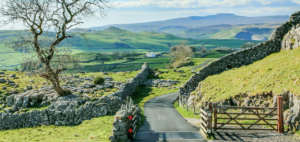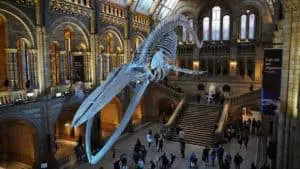Peaky Blinders’ Birmingham: A Tour of the Shelby Family’s Haunts

Updated On: April 12, 2024 by Ciaran Connolly
Birmingham’s streets echo with the footsteps of the notorious Shelby family, immortalised by the TV series Peaky Blinders. As we wander through the city, the spirit of the Peaky Blinders’ Birmingham is almost palpable, merging historical fact with dramatic fiction. The series, which chronicles the lives of a gangster family post-World War I, has revived interest in Birmingham’s past, enticing us to explore the real-world settings that inspired the show.

By partaking in a guided Peaky Blinders tour, we stroll through the heart of Birmingham, uncovering the intricate web of its history and its transformation over the years. This experience allows us not only to relive key moments from the series but also to gain insights into the city’s evolution and the very streets the real gang once roamed. From iconic filming locations to the cultural impact that the Peaky Blinders phenomenon has had on the city, our tour becomes a gateway to understanding the legacies that continue to shape modern Birmingham.
The Historical Backdrop of Peaky Blinders’ Birmingham

Birmingham, in the early 20th century, underwent significant industrial growth which set the stage for the stories akin to the Peaky Blinders. Its gritty streets played host to real gangs, whose legacies are still remembered today.
Birmingham’s Industrial Prowess
Birmingham’s industrial landscape during the late 19th and early 20th centuries was a testament to Britain’s manufacturing might. The city, known as the “Workshop of the World,” thrived on the back of its diverse trades. Metalworking, gun manufacturing, and jewellery-making fostered not only economic growth but also a booming population. Small Heath became a prime example of this industrial expansion, with rows of terraced houses sandwiching the bustling factories and workshops.
The Real Peaky Blinders Gang
The Peaky Blinders, a gang originally formed in the slums of Birmingham, gained notoriety during this time. Contrary to their dramatised depiction in the BBC series, the actual gang was known for their violence and gambling in the post-World War I era. The gang members’ signature attire often included peaked caps, contributing to their intimidating reputation. While the series infuses creative liberties, it does capture the essence of the challenges that characterised Birmingham’s darker history.
Exploring the Shelby Family’s Roots

In the web of Birmingham’s history, the notorious Shelby family stands out, with their exploits both thrilling viewers and igniting curiosity about their origins.
Key Members of the Shelby Clan
The head of the family, Thomas Shelby, is a masterful and ambitious leader, determined to secure the Shelby’s position of power within the city’s underbelly. His elder brother, Arthur Shelby, displays loyalty and volatility, often acting as Tommy’s right hand. Aunt Polly, their paternal aunt, stands as the family’s matriarch—a strong and shrewd figure with significant influence over the gang’s decisions. Less prominent but notable family members include Edward Shelby, who is less typically mentioned but nonetheless part of the lineage. Figures such as Alfie Solomons enter the Shelby orbit, adding complexity to the mix with his unpredictable nature.
Fiction vs. Reality: The Shelby Family
The Shelbys’ depiction in Peaky Blinders is a compelling narrative blend, with the backdrop of post-World War I Birmingham providing fertile ground for storytelling. However, the truth diverges from fiction: the real Peaky Blinders gang did exist, though they operated earlier than the 1920s setting of the show, while the Shelby family itself is a product of creative licence. The historical Peaky Blinders were infamous in the late 19th century, not for their criminal empire spanning from horse racing to illicit deals, but for their sartorial choices and street-level activities.
Iconic Filming Locations

Peaky Blinders captivates audiences with its gritty portrayal of early 20th-century Birmingham, yet the show’s actual filming locations weave through the extensive historical and urban landscapes of the UK, from Yorkshire’s county to the West Midlands’ captivating sites.
Capture the Visual Essence
Digbeth: This Birmingham district, with its industrial vista, is reminiscent of the period’s aesthetic that Peaky Blinders is so well-known for. It’s our connection to the city’s past, allowing fans to walk through history where the Shelby family’s drama might’ve unfolded.
Canal Arm: These waterways intertwine with the city’s industrial heritage, mirroring the series’ frequent canal-side scenes. They bring the atmosphere of the Shelbys’ Birmingham to life and remain a staple for fans seeking a tangible piece of the show’s soul.
Powis Street: Although not within Birmingham, this location in Liverpool substitutes for some of the series’ most well-trodden streets. It captures the necessary historical authenticity with its preserved Victorian architecture.
The Old Crown: As Birmingham’s oldest pub, it stands as a silent witness to the city’s evolving narrative and serves as a potential backdrop resonating with the bygone era depicted in Peaky Blinders.
From the Small Screen to the Streets
Black Country Living Museum: Perhaps one of the most recognisable locations, this open-air museum in Dudley has been an essential part of Peaky Blinders, offering fans the chance to immerse themselves in the set that doubles for the streets of vintage Birmingham.
Leeds: The city’s historic architecture has provided backdrops that complement the show’s visual theme, seamlessly substituting for parts of Birmingham’s urban landscape.
Liverpool: Beyond Powis Street, Liverpool’s myriad of heritage locations contribute extensively, transforming into various parts of Birmingham on-screen, meticulously chosen for their undisturbed historic character.
By strolling through these iconic filming locations, we are stepping directly into the frames of Peaky Blinders, experiencing the tangible textures that evoke the spirit of the Shelby family’s era. These sites bridge the gap between the small screen and our reality, offering a thoroughfare for us to explore and relive the series with a sense of historical presence.
Cultural Impact and the Peaky Blinders Phenomenon
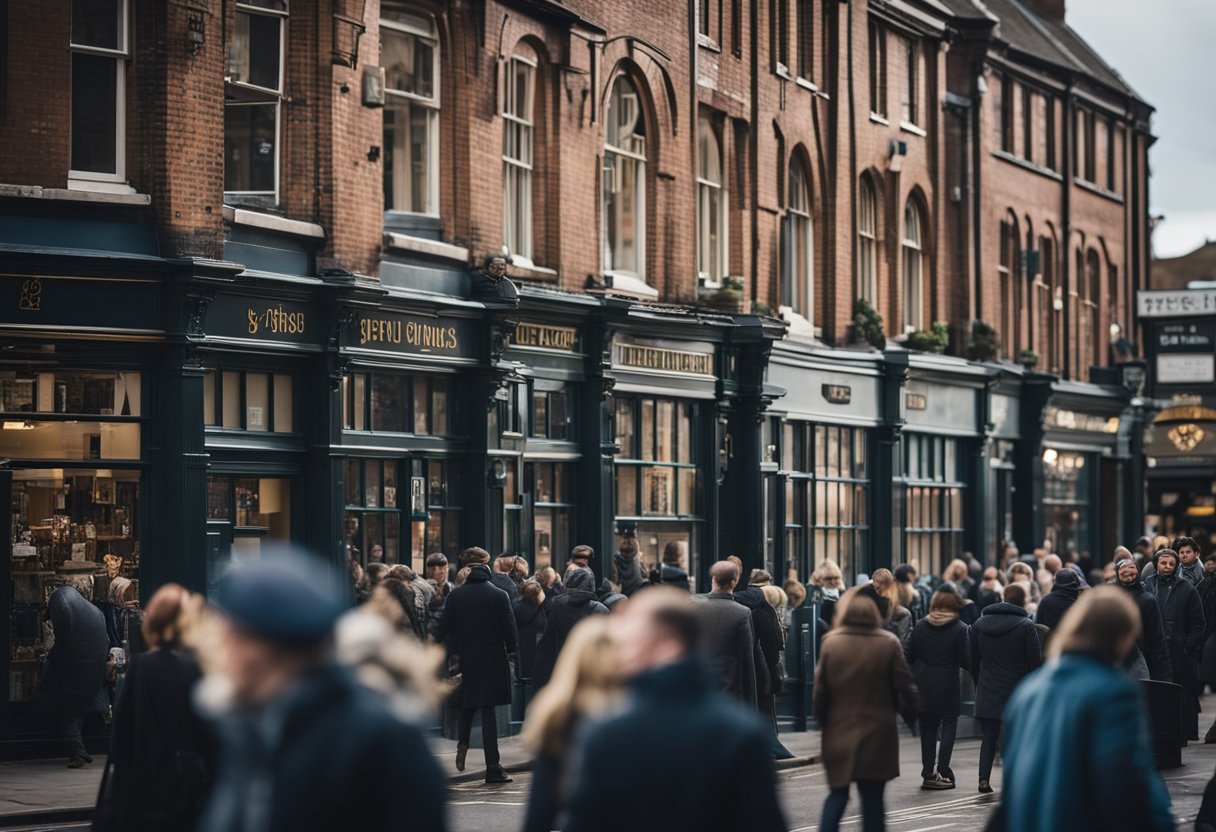
Peaky Blinders, with its compelling narrative and vivid portrayal of Birmingham, has significantly influenced both the city’s cultural identity and global appeal.
Peaky Blinders’ Influence on Birmingham
The atmospheric streets of Birmingham have been imbued with a renewed sense of identity through the narrative of Peaky Blinders. This gripping TV series, led by the enigmatic Cillian Murphy as Tommy Shelby, has heightened interest in the city’s history and cultural allure. Birmingham now celebrates its association with the Shelby family through a range of themed events and attractions. From Peaky Blinders nights that capture the spirit of the 1920s to proposals for a dedicated museum, the show has become a cultural touchstone for the city.
Additionally, plans to establish a film and TV studio in the region are anticipated to create a hub for future productions, potentially amplifying the city’s social and political influence. These initiatives demonstrate the immense cultural footprint of the series and highlight our role in nurturing the city’s burgeoning creative landscape.
Global Popularity and Tourism
Peaky Blinders has transcended its local setting to achieve remarkable global popularity. This has led to Birmingham emerging as a notable destination on the tourism map, with fans flocking from around the world to walk the Shelby’s streets. The phenomenon has given rise to various guided tours, allowing visitors to step into the world of the show.
The economic impact is tangible, with a surge in screen tourism — a boon for local businesses and the hospitality sector. Our collective imagination has been captured by this sweeping saga, illustrating how a powerful narrative can elevate a city’s prominence on the world stage and transform its image into a nexus of cultural depth and excitement.
Walking the Shelby’s Streets: A Guided Tour Experience
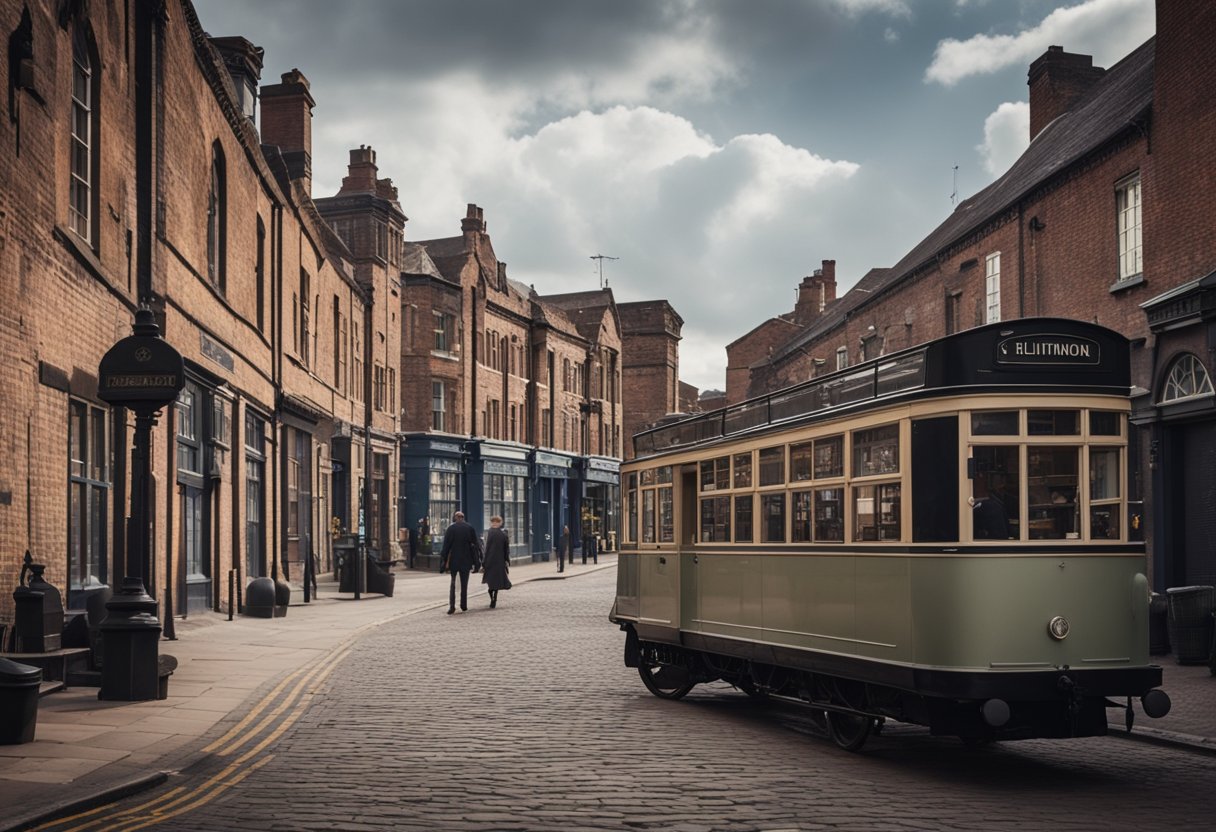
On the Birmingham Peaky Blinders walking tour, participants step into the evocative world of the Shelby family, fusing entertainment with a strong educational element. Our tour is an immersive journey through time and television history.
Entertainment Meets Education
Weaving through the cobbled lanes of Birmingham, our guided tour resonates with the spirit of the popular series, Peaky Blinders. It’s not just a stroll; it’s a comprehensive lesson connecting the fictional narrative with real locations that have defined the atmosphere of this period drama. Immerse yourself in the sights and the tales surrounding the Old Crown, Birmingham’s oldest inn, where you can almost hear the clang of Shelby horseshoes.
Exploring the Gritty Underbelly
By venturing into areas such as Small Heath, we trace the show’s gritty essence back to its historical roots. This is complemented by a unique opportunity to visit the West Midlands Police Museum, offering insights into the real historical figures and events that inspired the series. Here, the line between fact and fiction artistically blurs, enriching our understanding of the time when the real Peaky Blinders walked these streets.
Period Costume and Styling

As we explore the streets of Birmingham through the lens of the Peaky Blinders series, it’s essential to appreciate the meticulous detail in the show’s period costume and styling. These elements not only define the characters but also authentically recreate the aura of 1920s Birmingham.
The Iconic Peaky Look
The show’s protagonist, Thomas Shelby, is immediately recognisable by his outfit: a distinctive three-piece tweed suit, often in dark shades, coupled with a flat cap — a style staple of the era. The flat caps, which hide razor blades in Peaky Blinders, are not just a fashion statement but nod to the practicality and street smarts of the gangs of the time, such as the Sloggers. Birmingham’s historic Rainbow Pub and Custard Factory would have seen the likes of the real gang members dressed in similar, sharp attire.
Fashion’s Homage to Twenties Birmingham
The influence of the show has sparked a sartorial revival, with modern-day enthusiasts keen to embody the tough, dapper look of the Shelbies. From caps to three-piece suits, it’s evident that contemporary fashion has taken a page out of the Peaky book, evoking a sense of nostalgia for the unforgiving streets of post-war industrial Birmingham. This Peaky Blinders Costume Designer reveals the thought process behind dressing a character like Thomas Shelby for such success.
Unearthing Peaky Blinders Secrets
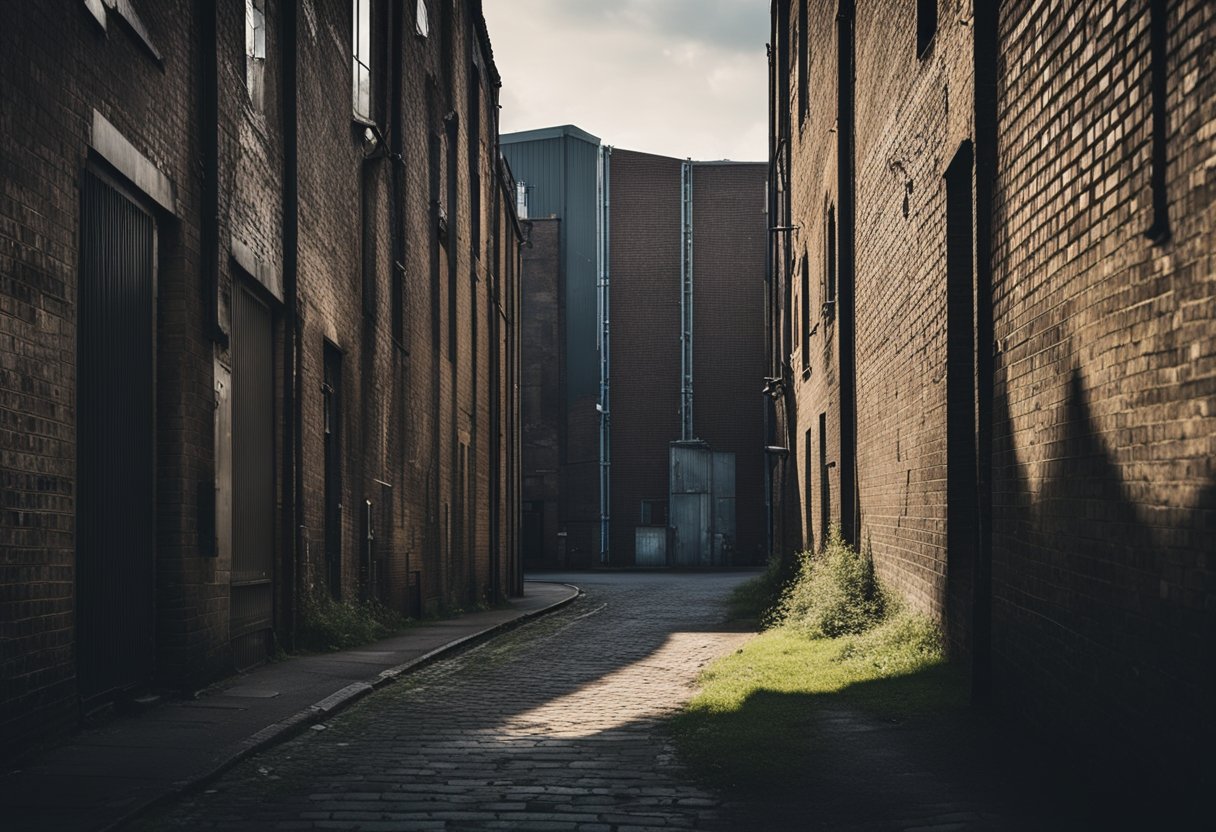
As we stroll through Birmingham’s cobbled streets, let’s uncover the mysteries and hidden details that make the world of Peaky Blinders so captivating.
Codes and Symbolism in the Series
The Shelby family’s rise to power is marked by codes and puzzles that weave through the Peaky Blinders narrative, drawing us into their clandestine operations. The series cleverly places symbols in graffiti and street art, reflecting the gang’s influence over Birmingham. These artistic marks often indicate safe houses or convey messages to allies and enemies alike. Such symbolic expressions ground the fictional drama in a realistic portrayal of gang culture’s hidden language.
Behind-the-Scenes Insights
Peeking behind the velvet curtain of the series reveals the extensive research that went into creating the authentic atmosphere of Peaky Blinders. A key piece of Birmingham’s underground history is the network of tunnels that the Shelbys might have used to move about unseen. While these passages are not explicitly shown, hints of their existence enrich the story, suggesting the strategic depth of the gang’s operations. Moreover, the production design team’s meticulous attention to historical accuracy — from costume to the period-appropriate sets — heightens our immersion into this shadowy world.
The Infamous Gangs of Birmingham’s Past
As we take a step back in time, the streets of Birmingham tell the tale of notorious gangs that once cast a shadow over the city. Among these, the Peaky Blinders and the Sloggers stand out, with their legacies of criminal activities still fascinating us today.
Comparing the Peaky Blinders and Sloggers
The Peaky Blinders were a group infamous for their brutal acts of violence and characteristic attire, which included flat caps with razor blades. Their criminal activities predominantly included robbery and gambling. They gained control over various territories in Birmingham and were known for their fierce nature. On the other hand, the Sloggers, an earlier gang, also terrorised the streets with violence but were less organised in their approach to crime and control within the city.
The Rise of Billy Kimber
A name that stands out in the annals of Birmingham’s gang history is Billy Kimber. Leader of the Birmingham Boys, Kimber, was notorious for his control over racecourse betting rackets. His rise to power was marked by his effectiveness in consolidating gangs, outmanoeuvring rival groups, and establishing a network of gambling operations. Kimber’s strategic alliances and ruthless stance on those who crossed him solidified his position and the legacy of his operations in Birmingham’s gang history.
The Legacy of Peaky Blinders in Modern Birmingham

The television series Peaky Blinders has had an indelible impact on Birmingham, transforming its image and becoming a catalyst for tourism and new attractions associated with the city’s history.
Transforming Birmingham’s Image
Peaky Blinders has dramatically altered perceptions of Birmingham. It’s spurred a renaissance of interest in the city’s cultural heritage. The show’s international success, evidenced by articles like those from BBC, has cast a spotlight on Birmingham’s unique history and its transformation into a modern, vibrant city.
Tourism and Future Attractions
Tourism: Following Peaky Blinders’ popularity, Birmingham has seen a surge in tourism. Fans of the show often seek to walk the streets once patrolled by the fictional Shelby family, leading to a significant boon for local businesses.
Activities: Themed tours and activities have become increasingly popular, offering an immersive experience into the world of the Shelbys. For example, a Peaky Blinders mural in the city has become a must-see attraction.
New Film: Anticipation of any new film release related to Peaky Blinders creates a palpable buzz, with the potential to attract even more visitors.
Birmingham continues to embrace its Peaky heritage, with more attractions in the pipeline to celebrate the enduring legacy of the show.
Entertainment Venues: Then and Now

In Birmingham, the evolution of entertainment venues from the time of the Peaky Blinders to the current day reflects the city’s vibrant cultural history and its adaptability to the changing tastes of the population.
Historic Pubs and Music Halls
Digbeth, historically a hub for factory workers, became known for its lively pubs where citizens unwound after hard days. The Rainbow Pub, an iconic spot dating back to the 1800s, hosted countless evenings of mirth and music for the locals. Today, it’s recognised as a Grade II listed building reflective of Birmingham’s notorious era, evoking stories that echo the city’s past.
In contrast, the legacy of music halls, venues that once reverberated with vaudeville acts and lively performances in the early 20th century, has given way to newer forms of entertainment, but the echoes of their influence resonate throughout the city’s culture.
Contemporary Spaces for Arts and Leisure
The Custard Factory, set in the heart of Birmingham, has transitioned from a literal factory for Bird’s Custard to becoming a quintessential example of a modern entertainment venue. Now it’s a creative and digital business workspace, also offering venues for art, independent shops, and eateries.
Peaky Tours have remained true to Birmingham’s history, offering guided walks that highlight the factual history interwoven with the dramatic flair inspired by the acclaimed series. These tours allow both locals and visitors to connect with the city’s heritage in an engaging and informative medium, providing insights into the transformation of its entertainment over the decades.
Learning from Peaky Blinders Workshops and Events
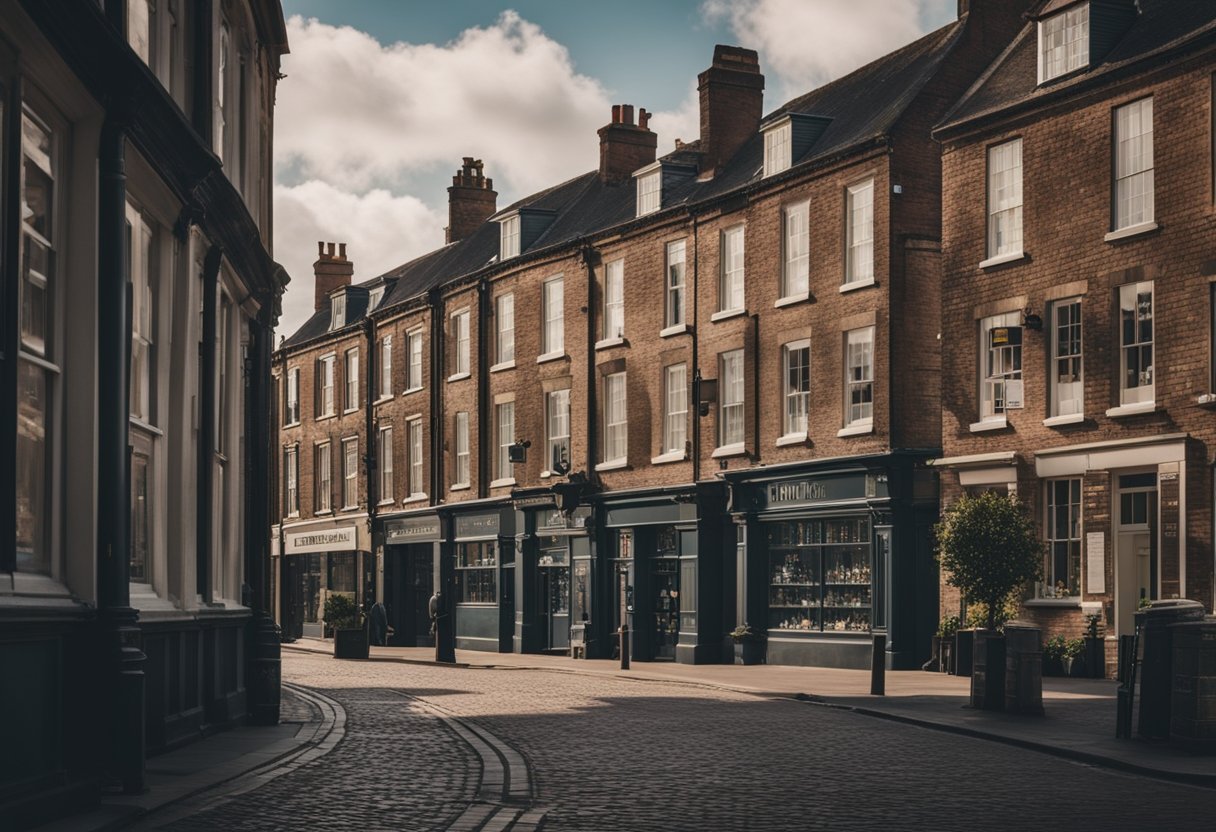
In Birmingham, an array of Peaky Blinders-themed workshops and events allows fans of the show to immerse themselves in the Shelby family’s world. We explore the real-life locations and learn about the history through engaging, hands-on experiences.
Interactive Experiences
Interactive Peaky Blinders nights, set in the atmospheric Midlands, are a spellbinding chance to don attire reminiscent of the 1920s and blend into Tommy Shelby’s world. These events often feature music, dancing, and even a bit of role-playing to truly transport participants to another era. At the Black Country Living Museum, visitors can step onto the historical set of the series, where they offer special events that are as instructive as they are entertaining.
Educational Activities
For those interested in the factual history behind the glamorous portrayal of the gangster lifestyle, the guided tours around Birmingham’s Peaky Blinders locations are a must. These tours delve into the gang’s history and its impact on the region. We can join a representative like a distant cousin of the real-life gang leader, Edward Shelby, to grasp the activities of the infamous gang and their influence on the city’s heritage.
Frequently Asked Questions

We’ve compiled common questions about exploring the Peaky Blinders series locations in Birmingham to enrich your experience.
Where can one find the locations used in the Peaky Blinders series in Birmingham?
Many of the atmospheric sites portrayed in the Peaky Blinders TV series are scattered across Birmingham, with some areas, like Watery Lane, being significant due to their historical connections to the real Peaky Blinders gang.
What are the options for a Peaky Blinders-themed experience in Birmingham?
For an immersive Peaky Blinders experience, you have several options, including themed tours that take you through the historic locations and escape rooms where you and your mates can live out a Shelby-inspired adventure.
How can I find a map that shows the Peaky Blinders walking tour in Birmingham?
Maps of Peaky Blinders walking tours in Birmingham can typically be found via tour providers’ websites, or, for those preferring to explore independently, local tourist information centres may also provide self-guided tour maps.
Is there an organised walking route that covers key Peaky Blinders locations in Birmingham?
Yes, there is an organised Peaky Blinders Walk in Birmingham that covers pivotal locations from the series, perfect for both history buffs and fans looking to step back in time.
Are there any tours available that focus on the Peaky Blinders series in Birmingham?
Indeed, there are dedicated tours available that focus on the Peaky Blinders, providing fans with intriguing insights into the historical gang and the filming locations used for the dramatised series.
What are some of the most iconic streets featured in Peaky Blinders?
Iconic streets such as Watery Lane are central to the legacy of the Peaky Blinders and feature prominently in the series, alongside other significant Birmingham landmarks that have become intertwined with the Shelby family’s on-screen saga.





